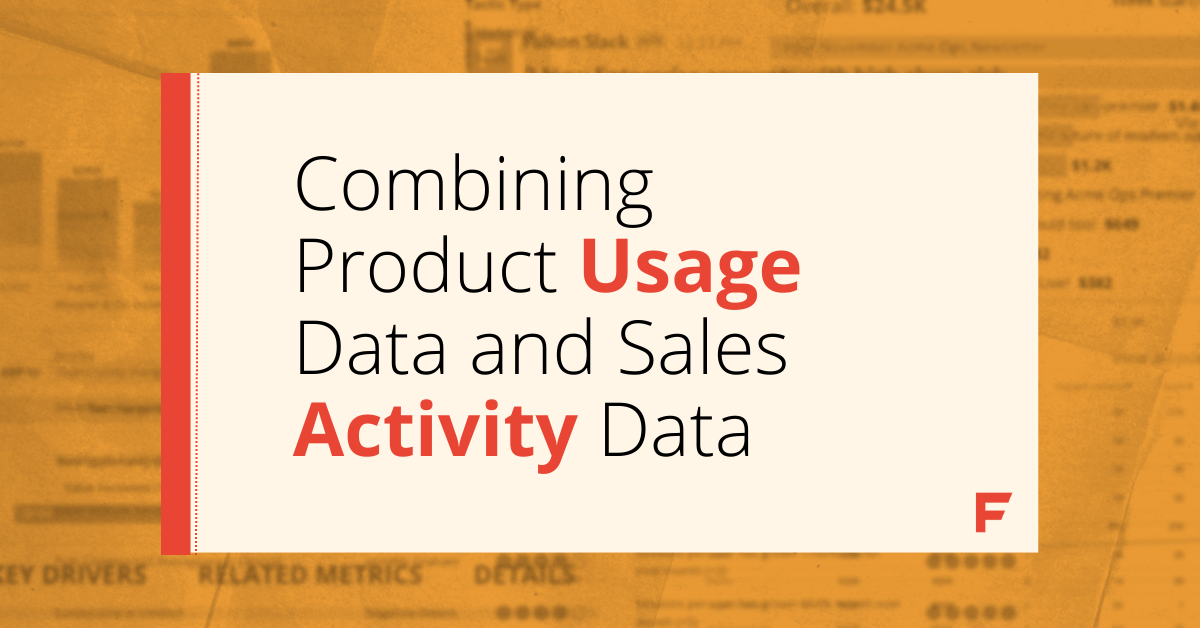Are you still relying on traditional revenue forecasting tools that predominantly use sales data and barely scratch the surface of marketing data? If so, it's time to rethink your approach. In today's fast-paced B2B SaaS industry, product usage data plays a crucial role in revenue forecasting. In this blog post, we'll discuss why you should be combining product usage data and sales activity data to revolutionize the way you do revenue forecasting.
Why Product Usage Data is Essential
If you're a software company, the most important leading indicator of your revenue and pipeline forecast lies in your product usage data. Regardless of whether you are a product-led growth (PLG) company, a subscription-based service, or you rely on usage-based pricing models, product usage data should be a top priority in your forecasting process.
When combined with sales activity data, product usage data can help you accurately forecast potential pipeline generation for free customers, new business pipelines, and expansion opportunities. By doing so, you'll have a better understanding of your company's growth trajectory and be better prepared to make informed decisions.
Four Key Areas of Revenue Forecasting
1. Pipeline Forecasting
By combining sales activity data and product usage data, you can identify free users belonging to ideal accounts with increasing usage. This approach helps you pinpoint potential pipeline generation opportunities and ultimately increase conversions.
2. New Business Forecasting
In a freemium business model, product usage insights can help you determine the likelihood of free users converting to paying customers. By combining product usage data and sales activity data, you can make more accurate revenue forecasts at the deal, team, and aggregate levels.
3. Expansion Forecasting
A comprehensive revenue forecasting model should consider both product usage signals and sales activity signals to determine the likelihood of account expansion within a given quarter. Accurate expansion forecasting allows you to allocate resources efficiently and maximize revenue opportunities.
4. Renewal Forecasting
Historically, revenue forecasting tools have focused on new revenue, neglecting renewal revenue forecasting. However, as a company, your focus should be on all revenue streams. By incorporating product usage data, sales activity data, and customer support data, you can create a comprehensive revenue forecasting model that considers renewals as well.
A Real-World Example
Imagine a scenario where your customer success manager identifies an account ready for expansion. Your sales rep adds this account to the forecast, and the traditional forecasting model, using sales activity data, predicts a successful expansion. However, the product usage data reveals a decline in engagement and value, which could jeopardize the expansion deal.
In this case, relying on traditional revenue forecasting tools may lead to inaccurate predictions and missed opportunities. By treating product usage data as a first-class citizen and combining it with sales activity data, you'll have a more comprehensive and accurate view of your revenue forecast.
Revenue forecasting for software companies should not only factor in product usage data but also treat it as a top priority. By combining product usage data with sales activity data, you can accurately forecast all types of revenue, including new business, expansion, and renewal. It's time to evolve your revenue forecasting process and set your company on the path to sustainable success.

